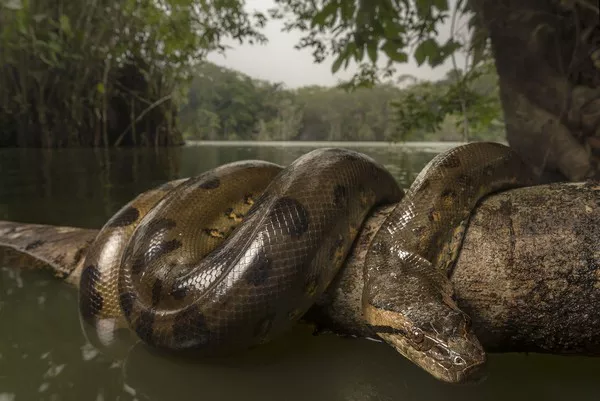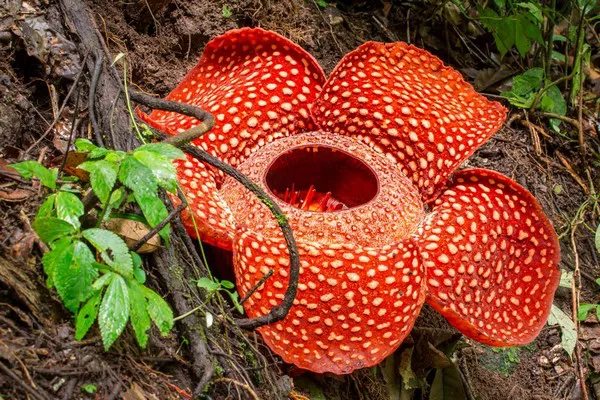The world of reptiles is fascinating, with many species exhibiting extraordinary traits. Among these, the green anaconda, the world’s heaviest and one of the longest snakes, stands out. This article explores the intriguing life of the green anaconda, delving into its characteristics, habitat, diet, behavior, and significance in both nature and culture.
Introduction to the Green Anaconda
Overview
The green anaconda (Eunectes murinus) is a non-venomous boa species native to South America. It is renowned for its immense size, often regarded as the largest snake in the world by weight. While there are other large snakes, such as the reticulated python, which can grow longer, the green anaconda surpasses all in terms of mass and girth.
Taxonomy and Classification
The green anaconda belongs to the family Boidae, which includes other large constrictors like boas and pythons. It is one of four species of anacondas, the others being the yellow anaconda (Eunectes notaeus), the dark-spotted anaconda (Eunectes deschauenseei), and the Bolivian anaconda (Eunectes beniensis).
Physical Description
Green anacondas have a distinctive appearance. They possess olive-green skin adorned with black blotches running the length of their bodies. Their eyes and nostrils are positioned on the top of their heads, allowing them to see and breathe while submerged. Female anacondas are significantly larger than males, a phenomenon known as sexual dimorphism.
See Also: The Biggest Sea Snail in the World – The Australian Trumpet
Habitat and Distribution
Geographic Range
Green anacondas are predominantly found in the tropical rainforests, swamps, marshes, and slow-moving rivers of South America. Their range includes countries like Brazil, Venezuela, Colombia, Ecuador, Peru, Bolivia, and the island of Trinidad.
Preferred Habitat
These snakes thrive in aquatic environments. They are semi-aquatic and are often found in and around water bodies. Their natural habitats include dense vegetation and bodies of water such as rivers, streams, swamps, and marshes, where they can hide and hunt efficiently.
Adaptations to Habitat
Green anacondas have several adaptations that make them well-suited to their environments. Their camouflaged skin helps them blend into the murky waters and forest underbrush, while their muscular bodies and aquatic abilities allow them to navigate and hunt in water effectively.
Size and Weight
Record-Breaking Dimensions
The green anaconda is the heaviest snake in the world. On average, they measure between 15 to 20 feet in length and can weigh up to 550 pounds. However, there are unverified reports of individuals exceeding 30 feet in length and weighing more than 800 pounds.
Growth and Development
Green anacondas grow rapidly in their early years. Like other reptiles, they continue to grow throughout their lives, with the rate of growth slowing down as they age. Their size is influenced by factors such as diet, habitat, and overall health.
Comparison with Other Large Snakes
While the reticulated python holds the record for the longest snake, green anacondas are generally bulkier and heavier. This distinction makes them unique among their large snake counterparts.
Diet and Hunting Techniques
Carnivorous Diet
Green anacondas are carnivorous and have a diverse diet. They primarily feed on a variety of prey, including fish, birds, mammals, and reptiles. Their diet can include capybaras, caimans, deer, and even jaguars.
Hunting and Constriction
These snakes are ambush predators, relying on stealth and surprise to catch their prey. They typically lie in wait in water, striking rapidly to seize their prey. Once they capture their target, they use their powerful bodies to constrict and suffocate the prey before swallowing it whole.
Digestive Process
The digestive system of green anacondas is highly efficient, allowing them to consume and digest large prey. After feeding, they can go weeks or even months without eating, depending on the size of the meal. Their slow metabolism aids in the digestion process, allowing them to extract maximum nutrients from their food.
Reproduction and Life Cycle
Mating Behavior
Green anacondas exhibit fascinating mating behaviors. During the breeding season, which typically occurs in the rainy season, males engage in “mating balls” where multiple males coil around a single female, competing to mate with her. This can last for several weeks until one male succeeds.
Gestation and Birth
Green anacondas are ovoviviparous, meaning they give birth to live young. After a gestation period of about six months, the female gives birth to a litter of 20 to 40 live young, although litters of up to 100 have been recorded. The newborns are independent from birth and receive no parental care.
Growth and Development
The young anacondas are fully capable of hunting and fending for themselves from birth. They grow rapidly in the first few years, reaching sexual maturity at around three to four years of age. Their lifespan in the wild is estimated to be around 10 years, but they can live longer in captivity.
Behavior and Ecology
Solitary Nature
Green anacondas are generally solitary creatures, except during the mating season. They prefer to spend their time alone, hunting, resting, and basking in the sun.
Aquatic Abilities
Their semi-aquatic nature makes them excellent swimmers. They are often found in water, using their stealth and agility to navigate and hunt. They can remain submerged for long periods, with their eyes and nostrils just above the water’s surface, allowing them to breathe and observe their surroundings.
Role in the Ecosystem
As apex predators, green anacondas play a crucial role in their ecosystems. They help maintain the balance of animal populations by controlling the numbers of their prey species. Their presence indicates a healthy, functioning ecosystem.
Human Interactions and Cultural Significance
Mythology and Folklore
Green anacondas have been a part of South American folklore and mythology for centuries. They are often depicted as powerful and fearsome creatures in indigenous stories and legends, symbolizing strength and mystery.
Ecotourism and Education
These snakes have also become a significant attraction for ecotourism. Wildlife enthusiasts and researchers are drawn to their habitats to observe and study them. Educational programs and documentaries help raise awareness about their ecological importance and conservation needs.
Threats and Conservation
Despite their fearsome reputation, green anacondas face several threats, including habitat loss, hunting, and capture for the pet trade. Conservation efforts focus on protecting their natural habitats, enforcing anti-poaching laws, and promoting sustainable practices to ensure their survival.
Research and Scientific Studies
Field Research
Field studies on green anacondas have provided valuable insights into their behavior, ecology, and biology. Researchers use various methods, including radio telemetry and direct observation, to track and study these elusive snakes in their natural habitats.
Conservation Biology
Conservation biologists work to understand the threats facing green anacondas and develop strategies to mitigate these risks. Efforts include habitat restoration, anti-poaching initiatives, and community engagement to promote coexistence between humans and these magnificent reptiles.
Captive Studies
Studies conducted in captivity have also contributed to our knowledge of green anacondas. Zoos and research facilities provide controlled environments to study their growth, reproduction, and health, offering insights that can aid in their conservation in the wild.
Fascination and Public Perception
Popular Culture
Green anacondas have made their way into popular culture through movies, books, and documentaries. Their portrayal ranges from terrifying monsters to awe-inspiring natural wonders, captivating the imagination of people worldwide.
Educational Outreach
Educational programs and outreach efforts aim to dispel myths and misconceptions about green anacondas. By educating the public about their true nature and ecological importance, these initiatives foster a greater appreciation and respect for these remarkable snakes.
Conservation Awareness
Raising awareness about the threats facing green anacondas and the importance of their conservation is crucial. Public support for conservation efforts can lead to increased funding, stronger protection measures, and a greater emphasis on preserving their habitats.
See Also: Top 10 Biggest Underwater Creatures Ever
Conclusion
The green anaconda, the biggest and heaviest snake in the world, is a true marvel of nature. Its impressive size, unique adaptations, and ecological significance make it a fascinating subject of study and admiration. As we continue to learn more about these incredible reptiles, it is essential to protect their habitats and ensure their survival for future generations to appreciate and study. Through conservation efforts, education, and research, we can help safeguard the future of the green anaconda and the rich biodiversity it represents.
You Might Be Interested In:

























